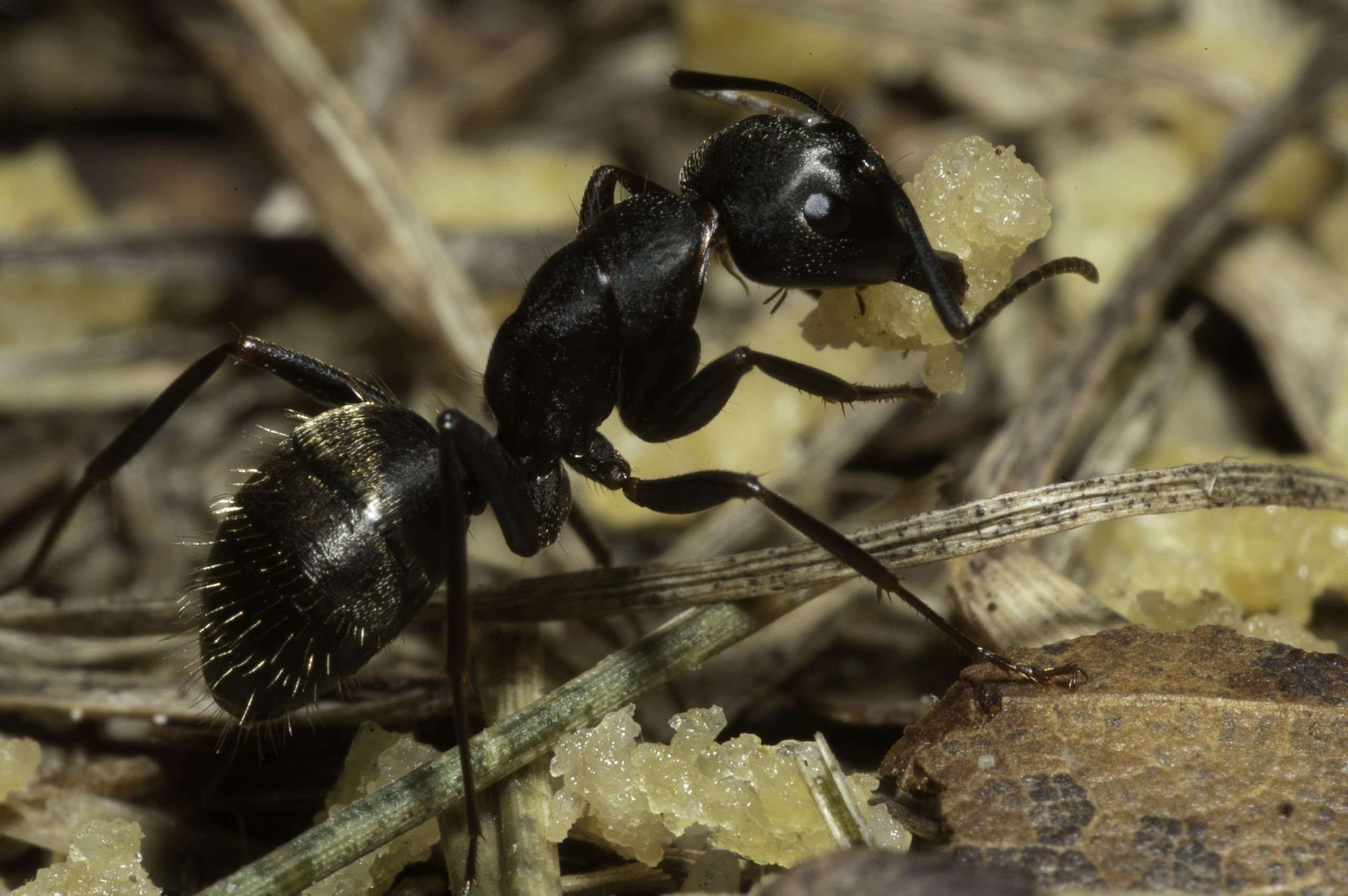
Carpenter ants are a common problem, but how damaging can they actually be? Is their damage truly dangerous, or nothing more than a simple nuisance? Let’s get to know carpenter ants a little bit better, and start understanding the magnitude of the problems that they can cause.
Carpenter Ant Behavior
Carpenter ants make initial contact with wet wood or wood that has been damaged by mold. But wait, let’s back up – what’s their deal with wood anyway? While there is a common misconception that carpenter ants eat wood, wood-eating is more of a termite game; carpenter ants burrow into wood and create comprehensive tunnel systems within them. These tunnel systems become the homes for their colonies and queen, and over years can become comprehensive networks of colonies that include what are called “satellite colonies”.
So back to that initial contact: carpenter ants will find wood weakened by water damage or rot and then begin their colony building in this easier to penetrate wood, but over time even dry, undamaged wood will become a target to a growing colony. Swarming season occurs in spring, with warmer temperatures acting as a period of high activity for carpenter ants.
Carpenter Ant Identification
Before we get too far ahead of ourselves, let’s establish what carpenter ants actually look like. Because their threats are perceived as similar, people often question whether they are dealing with termites or carpenter ants, so let’s clear that up.
Carpenter ants:
- Have bent/elbowed antennae
- Have 4 wings: 2 equally sized front wings and 2 smaller, equally sized back wings
- Have narrow, pinched waists
- Are black, brown, or reddish in color
Here’s an example:

Termites:
- Have straight, beaded antennas
- Have 4 wings of equal size
- Have straight or “not defined” waists
- Are transparent or creamy white in color; swarmers are dark brown or black
Here’s an example (sans wings):

If you are concerned that you’re dealing with the dark brown or black termite swarmers, take a careful look at the antennas, waists, and wings of the insect that you are seeing to identify which problem you are dealing with.
What Carpenter Ants Actually Eat
Carpenter ants don’t eat wood, so what do they eat? They function on a protein and sugar diet; some examples of foods that they eat include:
- Jelly
- Honey
- Syrup
- Any sweet foods in the home
- Meat
- Pet food
- Living and dead insects
- Nectar
Carpenter Ant Damage
So now that we have a few of the basics on carpenter ants out of the way, how serious can their damage be? The good news is that carpenter ant damage doesn’t usually reach the levels of termite damage – their ability to damage structures is often a much slower process and the damage is less severe. However, that doesn’t mean they are harmless, especially over time. If a colony is given time to grow into multiple satellite colonies inside of a structure, over a period of years the hollowed-out wood can become less structurally sound and more susceptible to rot and water damage, which can ultimately lead to partial collapse. This is an especially relevant threat when it comes to front porches and back decks, where carpenter ants tend to do the most damage in a home. Here’s one example of how carpenter ant damage can accrue over time:
You can see that the damage to this beam is not comprehensive enough to cause collapse, but the splitting of the wood caused by carpenter ant damage can certainly become even worse over time to fully threaten the structural integrity of the structure. This person luckily had the problem taken care of before things got too serious, but this damage is still troubling enough to require replacement and repair. In other words, this less than catastrophic damage is still problematic and costly and is not even the worst-case scenario for an untreated carpenter ant infestation.
Getting Rid of Carpenter Ants
While creating an environment that is not friendly to carpenter ants (drying up leaks inside of homes, taking care of moisture damage on wood in homes, eliminating dead tree stumps from your property) is the ideal way to keep them away, it isn’t always so simple. Moisture damage on wood can be tough to keep up with, and leaks in the home are not always immediately apparent. The more likely scenario is that you will actually see carpenter ants on your property during swarming season, which is the easiest way to identify their presence. That’s where we come in.
Our home pest control plan uses the most modern tactics in pest control to eliminate pests like carpenter ants and protect your home for the future with consistent preventative treatment. Don’t wait until it’s too late! Get in touch with us now to protect your home from carpenter ant damage and swarms ASAP.